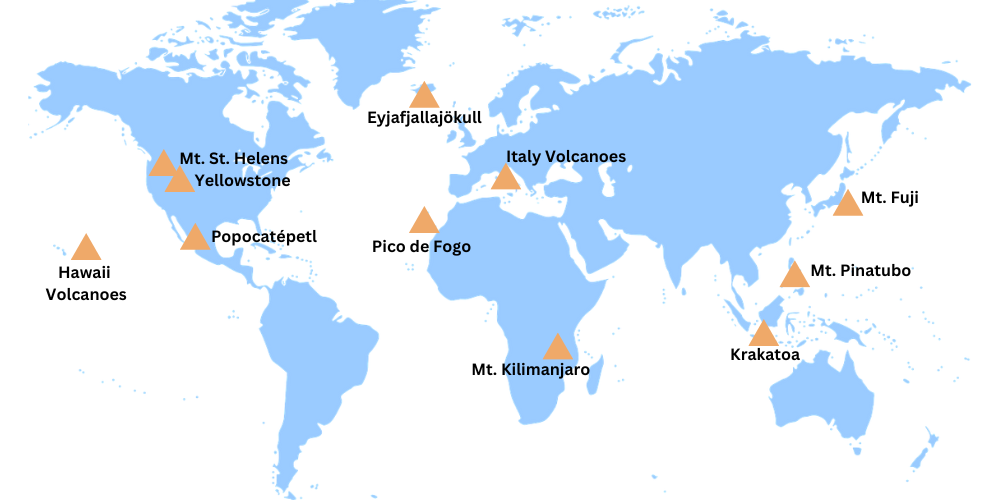Volcano Types

Mauna Kea
Image Credit -https://pixabay.com/users/pilgrimpassing-5205025/
Volcanoes, magnificent and awe-inspiring, are geological features that arise from the Earth's fiery depths. These natural wonders come in various shapes and sizes, each with unique characteristics that contribute to their eruptive behavior. In this article, we embark on a journey to explore the different types of volcanoes, uncovering the diverse landscapes shaped by the Earth's volcanic activity.
Shield Volcanoes
 |
| USGS-NPS Shield Volcano Diagram with labels. USGS illustration modified for NPS by Allyson Mathis 2022 For educational use. |
Named for their broad, gently sloping profiles resembling a warrior's shield, shield volcanoes are characterized by low-viscosity lava flows. These eruptions result in the gradual build-up of broad, dome-shaped structures. Shield volcanoes often span large areas and are associated with non-explosive, effusive eruptions. Mauna Loa and Mauna Kea in Hawaii exemplify the classic shield volcano form, boasting colossal dimensions and extensive lava fields.
Stratovolcanoes (Composite Volcanoes):
 |
| Mt. Rainier - Stratovolcano - Image Credit: National Park Service - Public Domain |
Stratovolcanoes are renowned for their towering peaks and explosive eruptions. These volcanoes are constructed from alternating layers of lava flows, volcanic ash, and other volcanic debris. The composite structure results from the interplay of effusive and explosive eruptions. Mount St. Helens in the United States and Mount Fuji in Japan are examples of stratovolcanoes, featuring steep slopes and often conical summits.
Cinder Cone Volcanoes:
 |
| Cinder Cone Volcano: Public Domain |
Cinder cone volcanoes are the smallest and simplest in structure. Formed from the accumulation of ejected volcanic debris such as ash, cinders, and lava fragments, cinder cones exhibit steep slopes and often have a bowl-shaped crater at the summit. These volcanoes are typically associated with short-lived, sporadic eruptions. Paricutin in Mexico and Sunset Crater in the United States are well-known cinder cone volcanoes.
Lava Domes (Volcanic Domes):
 |
| Lava Dome in Hawaii: Image Credit USGS - Public Domain |
Lava domes are formed by the extrusion of highly viscous lava, leading to the gradual building of dome-shaped structures. These volcanoes are characterized by their steep sides and the potential for lava to pile up at the summit. Lava domes often form within or adjacent to larger volcanic structures. Novarupta in Alaska and Mount St. Helens' post-eruption lava dome are examples of this volcano type.
Calderas
 |
| Twin Calderas in Alaska - Image Credit - National Park Service - Public Domain |
Calderas represent collapsed volcanic structures resulting from massive explosive eruptions or the emptying of magma chambers. These vast, bowl-shaped depressions can span tens of kilometers in diameter. Calderas are often associated with supervolcanoes and can be filled with water, forming crater lakes. Yellowstone Caldera in the United States and Lake Taupo Caldera in New Zealand are notable examples of calderas.
World Volcanoes
